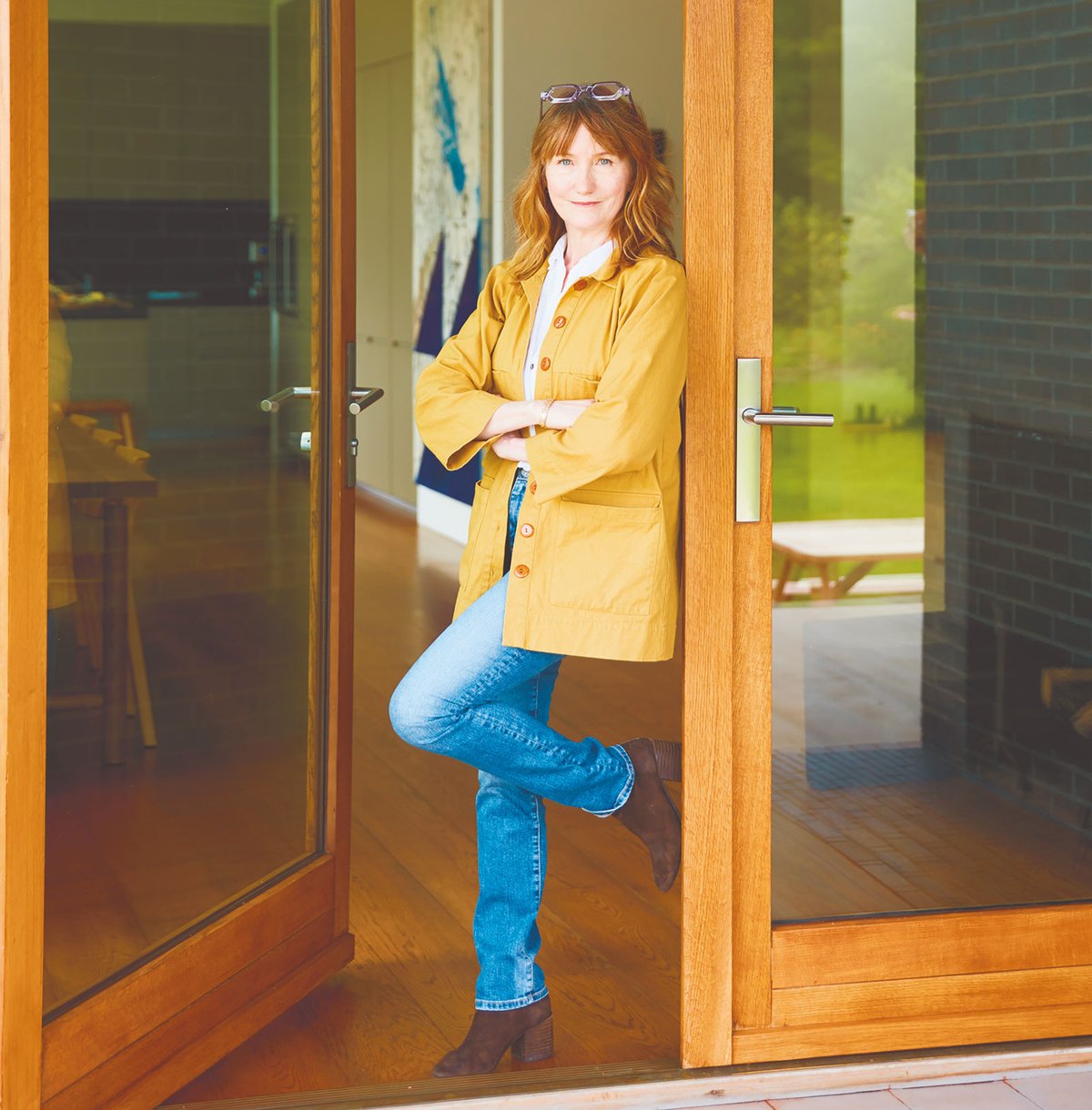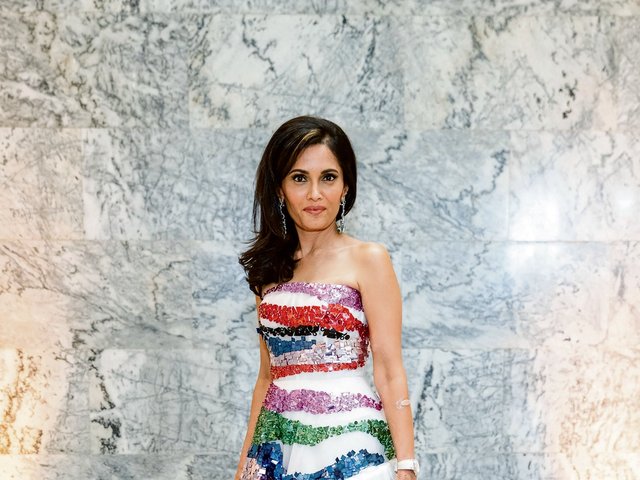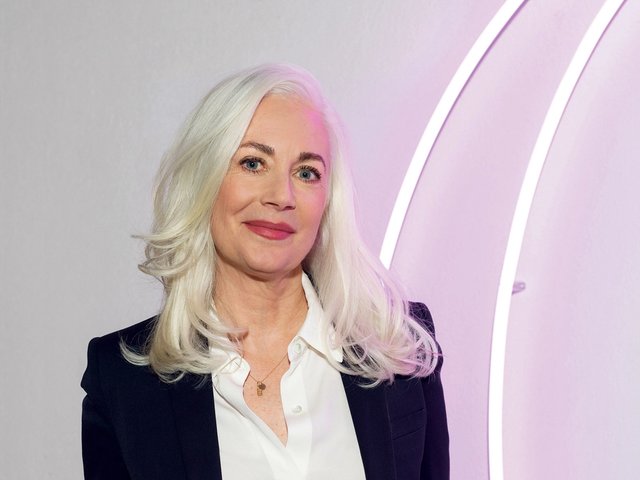For many years, art was the second-place passion for Becky Gochman, far behind horses, which she and her family own and compete with, travelling to shows for much of the year. But in recent years, collecting art has become a new focus for Gochman, who splits her time between Palm Beach and Manhattan. Among her renewed efforts is supporting the work of Forge Project, a space in upstate New York devoted to Indigenous artists that she co-founded with the former dealer Zach Feuer. The organisation’s activities have grown rapidly, as has its collection, which now includes works by Natalie Ball, Jaune Quick-to-See Smith and Raven Halfmoon.
The Art Newspaper: What was the first work you bought?
Becky Gochman: Probably something from Bread and Puppet Theater; I don’t remember exactly what it would have been, but I bought many prints and posters from them over the years. The ethos of affordable, accessible and socially engaged art has always deeply appealed to me.
What was your most recent purchase?
I recently purchased works from mother-and-daughter artists Sherri and Kerri Dick: two woven bags, one a clutch with skulls on it, the other a traditional weaving portrait of an animal face. Sherri and Kerri are Haida and use both Chilkat and Ravenstail weaving to create bags, sculptures and wall works. They just had a show in New York with Diana gallery, called NANMGAMALA, which translates to English as “the first one”. It’s what they call a copper shield that belongs to their family, which Kerri’s father, Chief Beau Dick, used in a ritual in 2014, shaming the Canadian government for treaty abuses. There is cedar woven into the bags, which is a reference back to that shield.
If your house was on fire, which works would you save?
Rachel Martin has been using our dining room as a makeshift studio to prepare for her first solo show. She’s been making incredibly intricate drawings and if the house was on fire, I’d grab them. This particular group of drawings is a series of figures that waver between human and animal, depicting—often with humour and contemporary [allusions]—tribal identity and references.
If money were no object, what would be your dream purchase?
I’d purchase studio space and provide materials and stipends for as many artists as possible. But in the spirit of the question, if I had to pick a single work, the painting that lives rent-free in my mind is Alice Neel’s Thanksgiving (1965). I was always appalled at that turkey in the sink at my house and the way mothers dealt with it. I thought that Neel approaching it not as a still-life, but almost a portrait of the turkey, was fascinating. I love that she has no frivolous beauty in the work, just this incredible depiction of the way things are.
Which work do you regret not buying when you had the chance?
I try to avoid the reverse speculation game and getting caught up in the works we miss. If the artist makes a sale to someone else, as long as the work is cared for, it’s all good by me. I try to think of myself as a temporary custodian and advocate for the works in the collection. Looking back over my time collecting, I’m more grateful for the knowledge that has been generously shared with us than the objects we possess. I’m eternally grateful for the chance to hear from artists like Jaune Quick-to-See Smith and G. Peter Jemison, and all that they’ve been willing to teach us.
What is the most surprising place you have displayed a work?
Our New York City apartment came wallpapered with images taken from a Hudson River School painting at the Frick. Like much Hudson River School work, the wallpaper is packed with the iconography of Manifest Destiny and colonial propaganda. So we’ve obscured the wallpaper by covering it with work by Native American and First Nations artists, as a very minor anti-colonial gesture.
Which artists, dead or alive, would you invite to your dream dinner party?
We focus primarily on works by living artists, but there are three whose work is in the collection who sadly passed away in the last few years: James Luna, Jim Denomie and Beau Dick. I’d love the chance to spend some time with each of them and hear about their work and experiences first-person, which I never had the chance to do.
What’s the best collecting advice you’ve been given?
To buy work from living artists, so that funds can go directly to the artists themselves.
Have you bought an NFT?
No. We’ve acquired works in various new media, though, as well as performance and temporary works. I am interested in supporting artists and making work more accessible. We’ve worked with some experimental ideas with ownership in the past that provide more access and flexibility, even if it means the work is less traditionally commodifiable. We recently added a work by Eric-Paul Riege to the collection—one that was deeply personal to him and that he imagined he’d keep working on for years. We “purchased” the work by sending him funds, but it will live with the artist and can be modified for as long as he wants.






